B Activities Reference
This appendix describes the Activities available for creating control flows in the Session Design Center of Oracle Communications Evolved Communications Application Server (OCECAS).
Add EDR Field Value
Fast key: AEDR

Description of the illustration ''addedrfieldvalue.png''
Stores into an EDR field a value that is either directly input or comes from an external concept.
The activity has two parameters:
-
EDR Field, select from the list, which is populated after typing some letters. For possible letters to type in, check the list of the predefined EDR field names below:
-
URL: Web Request URL
-
cst: Change Set ID
-
dep: Deployment ID
-
dom: Domain Name
-
mth: Web Request Method name
-
pfm: Platform Info EDR Group
-
res: HTTP response Code
-
rht: Remote Host
-
rqt: Time of request
-
sedt: End Datetime
-
srv: Server Name
-
tfn: Activities traversed
-
usr: User Name
-
web: Web Request EDR Group
-
b2br: B2B Session Result
-
b2et: B2B Session End Time
-
b2st: B2B Session Start Time
-
bar: Call Barred
-
call: Call Info EDR Group
-
cfn: Control Flow Names
-
chs: Chassis Info EDR Group
-
cid: SIP Call ID
-
cld: Called URI
-
clg: Calling URI
-
ctry: Country Code
-
ctyp: Call Type
-
dcld: Diverted Called URI
-
drul: Call Diversion Rule
-
eec: UDR Error Code
-
eer: UDR Error Reason
-
pcl: Protocol
-
pvd: Service Provider
-
rcldv: Redirected Called URI
-
relc: SIP Release Cause
-
rgstn: Registration
-
roam: Call Roaming
-
spmt: SIP Method
-
ssdt: Start Datetime
-
udr: User Data EDR Group
-
-
EDR Value A value that can be directly input or comes from an external concept.
The activity has two exits:
-
Success, when added successfully.
-
Error, when encountering invalid parameters, edr field, or edr value; or unable to retrieve information from the specified external concept.
Adjust Media
Fast Key: ADJM

Description of the illustration ''adjustmedia.png''
Mutes or unmutes the media stream for a conference participant.
The activity has two parameters:
-
Session Endpoint, initiating endpoint or event source.
-
Adjustment, MUTE or UNMUTE.
The activity has six exits:
-
Success
-
Error (Server)
-
Error (Media)
-
Error (Timeout)
-
Error (Not Supported)
-
Error for any other reasons
Alarm
Fast Key: ALM

Description of the illustration ''alarmactivity.png''
Logs an occurrence of the configured alarm. The activity performs the following operations:
-
Gathers the Text and Resolution.
-
Raises the alarm.
-
Exits a branch based on response status.
The activity has three parameters:
-
OID Postfix, a value that can be directly input or comes from an external concept. It is used together with the OID prefix configured in the Alarm tab in the OCECAS administration console to form a complete unique OID that identifies the alarm.
-
Alarm Text, the value can be input directly or come from an external concept. It describes what has happened.
-
Alarm Resolution, the value can be a direct input or from an external concept. It provides the resolution information.
The activity has two exits:
-
Success when the alarm is raised successfully.
-
Error when the input is invalid or the activity is unable to retrieve information from the specified external concept.
Array Index
Fast Key: AIDX

Description of the illustration ''arrayindex.png''
Sets and stores the index of an array that is then used for accessing that array. The activity performs the following operations:
-
Initiates a Retrieve Context Action request to get the array size. If the operator is Increment or Decrement, it also retrieves the current array index.
-
Processes the Retrieve Context Action response, which consists of calculating and validating the new array index and storing it or deleting the existing array index value.
-
Processes the Store Context Action response.
-
Processes the Delete Context Action response.
The activity has three parameters:
-
Array, the value is from an external concept of the array type.
-
Index, a value that is input directly or obtained from an external concept.
-
Operator, Set, Zero, Max, Increment, Decrement, New and Clear Index.
The activity has three exits:
-
Success when setting and storing the array index successfully.
-
Not Found when unable to locate the array while the operator is not New.
-
Error when encountering invalid parameters or values, or failed use the operator to set the current array index, or failed to store the array index.
Compare
Fast Key: COMP

Description of the illustration ''compare.png''
Compares a source external concept with a given value or another external concept. The activity performs the following operations:
-
Verifies ContextKey parameter is valid. Specifies the /UserData/Service/View/Field path.
-
Verifies Comparison string is valid.
-
Invokes RetrieveContextValue ActionRequest with specified ContextKey:
-
ReadFromUdr Action intercepts the RCV ActionRequest and inspects the ContextKey. If prefix is '/UserData', then continue.
-
Invoke UDR Facade for given ContextKey.
-
Process UDR response - extract data from returned view.
-
Store extracted data into context map.
-
Defer to standard RetrieveContextValue Action, which populates the ActionResponse and returns to the Activity.
-
-
Verifies successful query
-
Compares retrieved value with specified comparison string
-
Branches on comparison result
The activity has three parameters:
-
Source, the value is an external concept.
-
Compare With, the target value, which is input directly or comes from another external concept. It is optional if the comparator is EXIST.
-
Comparator - regex, =, !=, <, <=, >, >=, and exist.
The activity has four exits:
-
Success when comparison succeeds.
-
Not Matched when comparison failed.
-
Not Found when failed to locate source and the comparator is not EXIST, or failed to locate the target value.
-
Error when failed to locate source and the comparator is EXIST.
Compare Date Time
Fast Key: CPDT

Description of the illustration ''comparedatetime.png''
Compares a range of date time types, including Date, Time of Day, and Date and Time. The activity performs the following operations:
The activity has six parameters:
-
Timezone, used to adjust the target datetime value.
-
Source, a value from an external concept.
-
Compare With, a value that is input directly or comes from an external concept. This is the value that is compared against the source.
-
Compare Now, a checkbox that specifies a target value that is the current time. This value takes precedence over the derived target value from the Compare With parameter and is compared against the source.
-
Comparator: =, !=, <, <=, >, and >=
-
Date and Time Type: One of the following types for the comparison.
-
Date
-
Time of Day
-
Date and Time
-
The activity has four exits:
-
Success when comparison succeeds.
-
Not Matched when comparison fails.
-
Not Found when unable to locate the values of all external concepts.
-
Error when failed to get the target date value or date parameter values are invalid.
Compare Day of Week
Fast Key: CPDW

Description of the illustration ''comparedayofweek.png''
Compares day-of-week values. The activity performs the following operations:
-
Obtain the input parameters
-
Get required values from Context
-
Compare retrieved value with specified comparison value.
-
Branch on comparison result
The activity has six parameters:
-
Timezone, adjusts the target datetime value.
-
Source, a value from an external concept.
-
Compare With, a value that is input directly or comes from an external concept. The value is used as the target compared against the source.
-
Compare Now, a checkbox that specifies a target value that is the current time. This value takes precedence over the derived target value from the Compare With parameter and is compared against the source.
-
Comparator: =, !=, <, <=, >, and >=
-
Date and Time Type: One of the following types for the comparison:
The activity has four exits:
-
Success when comparison succeeds.
-
Not Matched when comparison fails.
-
Not Found when unable to locate the values of all external concepts
-
Error when unable to get the target date value or having invalid date parameter values.
Compare List And Value
Fast Key: CPRL

Description of the illustration ''comparelistandvalue.png''
Matches a target string against a list of source strings. The source strings and the target string can be regular expressions.
The activity has three parameters:
-
Source List, a list of strings as source stored in an external concept.
-
Compare With, a target string that is either input directly or comes from an external concept.
-
Comparator: regex, =
The activity has three exits:
-
Success when comparison succeeds.
-
Not Found when unable to retrieve values from specified external concepts.
-
Error when comparison fails.
Copy Value
Fast Key: COPY

Description of the illustration ''copy.png''
Copies the value from one context field to another context field.
The activity performs the following operations:
-
Verifies Source ContextKey parameter is valid.
-
Verifies Destination ContextKey parameter is valid.
-
Invokes RetrieveContextValue ActionRequest with Source ContextKey.
-
Extracts value from retrieved context key.
-
Stores extracted value in destination context key.
-
Verifies store succeeded.
-
Branches on result.
The activity has two parameters:
-
Source, the source value from an external concept.
-
Destination, the value is from an external concept.
The activity has two exits:
-
Success when copying was successful
-
Error when unable to retrieve the source value, or unable to convert the source value into a data type that the destination requires, or failed to store the destination value.
Date Time Offset
Fast Key: DTO

Description of the illustration ''datetimeoffset.png''
Applies an offset to a Date, Time or DateTime source value.
The activity has six parameters:
-
Compare Type: Now (comparing with the current time), Context Location.
-
Source, a value that can be input directly or come from an external concept.
-
Timezone, optional, a value that can be input directly or come from an external concept. The value contains a string literal value of one of the Canonical ID values of the Olsen tz database. It is only applicable to date and time values. The date time value may itself contain a Timezone, this parameter allows us to convert it to a time in the requested TZ. If the parameter is absent then the default Timezone of UTC is used.
-
Time Offset, a value that can be input directly, be an integer literal value, or come from an external concept. The value may be negative.
-
Offset Units, the value can be input directly, or be an integer literal value, or come from an external concept. The value is a string literal. Possible values are:
-
Destination, the location of the result, which must be a context path. It represents the location to place the incremented or decremented DateTime or TimeOfDay value. The type of the value put in the result location is the same as the type of the source value.
The activity has two exits:
-
Success when adjusted successfully
-
Error when receiving invalid action response, or failed to retrieve any context values, or failed to store the adjusted date time value.
Delete
Fast Key: DEL

Description of the illustration ''delete.png''
Allows a control flow to delete a context field entry.
The activity performs the following operations:
-
Verifies that the Source parameter is valid.
-
Invokes DeleteContextValue ActionRequest.
-
Verify that the Delete succeeded.
-
Branch on result.
The activity has one parameter:
-
Source, an external concept which specifies the context field to be deleted.
The activity has two exits:
-
Success when the delete operation succeeded.
-
Error when unable to retrieve the source value or unable to delete the source value.
End
Fast key: END

Description of the illustration ''end.png''
Denotes the end of a control flow branch.
The activity has no parameters and no exits.
End Charging Session
Fast Key: ECS

Description of the illustration ''endchargingsession.png''
Ends a charging session with the charging data function (CDF)/online charging system (OCS).
The activity has four parameters:
-
Charging Type: off-line, on-line
-
Request Template, the value is from an external concept of the charging template type.
-
Answer Template, the value is from an external concept of the charging template type.
-
Session Name: Charging Session 1, Charging Session 2, Charging Session 3, Charging Session 4, and Charging Session 5.
The activity has three exits:
-
Success, when charging ends successfully.
-
No Session, when there is no charging session in progress.
-
Error, when charging ends with failure.
Event Charge
Fast Key: EVTC

Description of the illustration ''eventcharge.png''
Sends a charging event to the charging data function (CDF). Both offline charging (Diameter Rf) and online charging (Diameter Ro) are supported.
The activity has three parameters:
-
Charging Type: On-line, Off-line
-
Request Template, the value is from an external concept of the charging template type.
-
Answer Template, the value is from an external concept of the charging template type.
The activity has three exits:
-
Success, when charging event successful
-
Denied, when receiving reservation DENIED charging response (on-line charging only)
-
Error, when receiving NO SESSIOIN, FAILURE, PENDING FAILURE charging response, or failed to retrieve template parameters.
Extract And Store String
Fast Key: EXCT
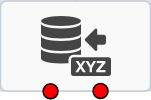
Description of the illustration ''extractandstorestring.png''
Extracts a string value via regular expression and stores the result in the context.
The activity has three parameters:
-
Source, where to extract strings. The value can be from string that is input directly or from an external concept.
-
Comparator, a value that comes from user input. The input string is a regular expression, which is used to extract a matching string from the source.
-
Destination, location where the extracted string should be stored. The value is an external concept of String type.
The activity has two exits:
-
Success, when successfully extracted and stored strings.
-
Error, when unable to get the configuration of any of the parameters, or unable to retrieve the source value from the specified external concept, or unable to store the list of extracted strings to the destination.
Find and Replace And Store Value
Fast Key: FIND

Description of the illustration ''findandreplaceactivity.png''
Finds a given value in a source, replaces it, and stores the updated value into a destination.
The activity has five parameters:
-
Source, the source string value can be either from a direct user input, or an external concept.
-
Search Value, the actual string to search in the source, The value is from the user input. The value will not be used as a regular expression during search.
-
Replacement Value, the replacement string from the user input.
-
Search Option: All Values, or First Value only.
-
Destination, where to store the updated source value. The value is an external concept.
The activity has two exits:
-
Success, when successfully finding, replacing, and storing the value.
-
Error, when failed to get the configuration of any of the parameters, or failed to retrieve the source value from the specified external concepts, or failed to store the updated value to the destination.
Generate Document and Store
Fast Key: GDOC

Description of the illustration ''generatedocumentandstore.png''
Generates a document from a template using a specified content-type and stores it into a destination.
This activity performs the following operations:
-
Gathers the service URL and template
-
Selects the action based on REST/SOAP selection
-
Marshals the response into context
-
Exits branch based on response status
The activity has four parameters:
-
Document Template, the value is an external concept of the Template type.
-
Language Of User, the language to use, either input directly or obtained from an external concept. Note that the value must be in the configured languages of the specified document template. Otherwise, the error branch will be taken during the runtime.
-
Destination, the external concept where the generated document is stored.
-
Content-Type, the content type, which is an external concept, of the generated document. The value can be used by Send Message Activity when sending outbound messages.
The activity has two exits:
-
Success when successfully generating and storing the document.
-
Error when unable to get the configuration of any of the parameters; retrieve the document template from the specified external concept; recognise the specified language; or store the generated document and content type.
Increment Statistic
Fast Key: INCS

Description of the illustration ''incrementstatistic.png''
Increments the statistic derived from the statistic definition parameter.
The activity performs the following operations:
-
Gathers the Statistic Definition Id.
-
Invokes the Increment Statistic Action to perform the increment.
-
Exits branch based on response status.
The activity has one parameter:
-
Statistic Definition, specified by an external concept of the Statistic type.
The activity has two exits:
-
Success when successfully incrementing the statistic.
-
Error when unable to get a valid parameter configuration or retrieve the statistic definition from the specified external concept.
Load Service Definition
Fast Key: LSD

Description of the illustration ''loadservicedefinition.png''
Loads and runs a derived service retrieved from the UDR. If a service cannot be determined during control-flow design time, but is only determined during run-time, this activity can be used to achieve that.
The activity has one parameter:
-
Service Definition, the service to be loaded and run, which is derived from an external concept.
The activity has one exit:
-
Service Not Loaded, when unable to get the configuration of the Service Definition parameter, or unable to retrieve the value from the specified external concept.
Maths
Fast Key: MATH
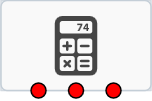
Description of the illustration ''maths.png''
Enables basic numerical operations in a control flow. The available operations are: addition, subtraction, multiplication, division and modulus. All operations are performed with two operands, one of which is the contents of a context field (Source). The second operand can be either a literal value or the contents of another context field (Operand). The calculated result is stored into a context field (Destination) which can differ from the source field.
The operands can be any combination of integer, decimal or string values. All operands are converted into decimal (Double) format prior to the calculation. The result can be stored as an integer, decimal or string value. When storing the result as an integer, the calculated value is rounded down towards zero. See "The Java Language Specification," section 5.1.3, for details.
The activity performs the following operations:
-
Verifies that the following activity parameters are valid:
-
Source ContextKey parameter.
-
Operator parameter.
-
Operand ContextKey parameter.
-
Destination ContextKey parameter.
-
-
Invokes RetrieveContextValue Action Request with specified context keys.
-
Extracts and validate values from retrieved context keys.
-
Performs the required numerical operation.
-
Invokes StoreContextValue Action Request to store the result into the destination context field.
-
Verifies the store succeeded.
-
Branches on result.
The activity has four parameters:
-
Source, the value is from an external concept and may have type Integer, Float or String.
-
Operator, Add, Subtract, Multiply, Divide and Modulus.
-
Operand, the value is from an external concept and may have type Integer, Float or String.
-
Destination, the value is from an external concept and may have type Integer, Float or String.
The activity has three exits:
-
Success, when the numerical operation was performed successfully.
-
Not Found, when unable to locate a context key parameter.
-
Error, when encountering invalid parameters or values, or the numerical operation fails - for example, when dividing by zero error.
Prefix Tree Lookup
Fast Key: PTLU

Description of the illustration ''prefixtreelookup.png''
Looks up a value in a specified prefix tree.
The activity has six parameters:
-
Prefix Tree, specifies which prefix tree to use. The value is an external concept of the PrefixTree type.
-
Search Key, specifies the value to look up in the specified prefix tree. The value can be directly input or come from an external concept.
-
Prefix. Optional. It specifies a context location to store the matched prefix value.
-
Path, Optional. It specifies a context location to store the matched path value. The path value is the path from the root element of the tree to the leaf that was matched.
-
Exact Match. A boolean value that indicates whether or not exact matching should take place. The exact matching is performed when comparing the matched prefix value to the dynamic exit mapping definitions.
The activity can have more than three exists as it can define dynamic exits.
-
Default Match, when found a value in the prefix tree but the value is not mapped to a dynamic exit.
-
Not Found, when failed to find the search key in the prefix tree.
-
Error, when failed to retrieve values from specified external concepts, or failed to store matches prefix value or path.
-
Prefix Exits. A parameter map that contains dynamic exits mapping to chosen prefix values.
Release
Fast Key: REL

Description of the illustration ''release.png''
Releases a SIP session with a SIP cause value.
The activity has two parameters:
-
Session Endpoint, specifies which endpoint to release: Initiating Endpoint or Destination Endpoint.
-
Code, specifies the release cause, for example 480.
The activity has two exits:
-
Disconnected, when a SIP session has been successfully released.
-
Error, when parameters were invalid or unable to retrieve parameter values, or the release action is unsuccessful.
Remote Copy
Fast Key: RCPY

Description of the illustration ''remotecopy.png''
Copies the value of a context field associated with a different SipApplicationSession to another context field.
The activity performs the following operations:
-
Verifies that Source ContextKey parameter is valid.
-
Verifies that Destination ContextKey parameter is valid.
-
Verifies that Session ID is valid
-
Invokes RetrieveRemoteContext Action Request with Source ContextKey.
-
Extracts value from retrieved context key.
-
Stores the extracted value in destination context key.
-
Verifies store succeeded.
-
Branches on result.
The activity has three parameters:
-
Source, specifies a context location to retrieve the source value.
-
Destination, specifies a context location to store the retrieved value from the source.
-
Source Session, specifies a context location to retrieve the SipApplicationSession with which the source is associated.
The activity has two exits:
-
Success, when it successfully copied the value from a different SipApplicationSession to the specified place.
-
Error, when invalid parameters were encountered, or unable to retrieve values from the specified external concepts, or unable to store the value into the specified destination.
Retrieve Session List
Fast Key: RSL

Description of the illustration ''retrievesessionlist.png''
Retrieves a list of SIP Application Session IDs for the specified session key.
The activity performs the following operations:
-
Verify Source ContextKey parameter is valid.
-
Verify Destination ContextKey parameter is valid.
-
Invoke RetrieveContextValue Action Request with Source ContextKey.
-
Extract value from retrieved context key.
-
Store extracted value in the session as an index key.
-
Verify store succeeded.
-
Branch on result.
The activity has two parameters:
-
Source, a String type external concept where the search session key is stored.
-
Destination, a StringArray type external concept where the retrieved IDs are stored.
The activity has two exits:
-
Success, when successfully retrieved the list of SIP Application IDs and stored in the destination.
-
Error, when invalid parameters encountered, or failed to retrieve the search session key from the specified external concept, or failed to store the value into the specified destination.
Route
Fast Key: RTE
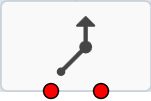
Description of the illustration ''route.png''
Redirects a call to the original destination endpoint.
The activity has no parameters.
The activity has two exits:
-
Success, when the call is successfully routed.
-
Error, when failed to route the call to the original destination endpoint.
Route Changed
Fast Key: RTEC
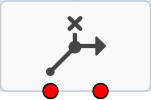
Description of the illustration ''routechanged.png''
Redirects a call to the destination address.
The activity has one parameter:
-
Destination Endpoint, where to route the call. The value can be directly input, or come from an external concept.
The activity has two exits:
-
Success, when successfully route the call to the specified destination endpoint.
-
Error, when an invalid parameter encountered, or unable to retrieve the destination endpoint from the specified external concept, or unable to route to the specified destination endpoint.
Run Control Flow
Fast Key: RCF

Description of the illustration ''runcontrolflow.png''
Runs a control flow. The control flow is selected during control flow design time where only application control flows will be listed. The message control flows, such as the 'SIP INVITE' control flow, will not be available.
The activity has one parameter:
-
Control Flow, the value is from a filtered drop-down list when the designer types. Hint: Typing a space will show all available control flows.
The activity has no default exits and more than one dynamic exit.
-
Dynamic exits, of which there can be more than one. These are derived from the configured Exit Activities in the selected control flow. If the selected control flow is changed, the number of dynamic exits will be updated on the Run Control Flow Activity and additional exits may need to be connected.
Run Service Definition
Fast Key: RSD

Description of the illustration ''runservicedefinition.png''
Runs a control flow that is associated with a specified service. The service and the control flow are selected during control flow design time.
The activity has two parameters:
-
Service, which is chosen from a drop-down list.
-
Control Flow, which is chosen from a filtered drop-down list when the designer types. Hint: Typing a space will show all available control flows.
The activity has no default exits and more than one dynamic exit.
-
Dynamic exits, which can be more than one. These are derived from the configured Exit Activities in the selected control flow. If the selected control flow is changed, the number of dynamic exits will be updated on the Run Service Definition Activity and additional exits may need to be connected.
Run Web Service
Fast Key: RWS

Description of the illustration ''runwebservice.png''
Runs a web service, either SOAP or REST.
The activity performs the following operations:
-
Gathers the service URL and template
-
Selects the action based on REST/SOAP selection
-
Marshals the response into context.
-
Exits branch based on response status.
The activity has five parameters:
-
Web Service Type: SOAP or REST
-
Web Service Template, the value is from an external concept of Template type. Then the designer needs to specify external concepts for each variable used in the template.
-
Language Of User, which language to use, which can be directly input or come from an external concept. Note that the value must be in the configured languages of the specified template. Otherwise, the error branch will be taken during the runtime.
-
Web Service Response, an external concept where the web service response will be stored.
-
Message Timeout, an integer value for setting up the timeout
The activity has four exits:
-
Success, the client successfully executes the specified web service and receives a SUCCESS response.
-
Error (Response), the client successfully executes the specified web service, but receives a FAILURE response from the server.
-
Failure (Transient), a failure caused by temporary conditions, such as a timeout waiting for the response. The request may work if tried again.
-
Failure (Permanent), a failure that indicates there is no point trying the request again. This could be because the request couldn't be sent due to:
-
invalid parameters
-
failed to retrieve the context keys used by the specified template
-
failed to retrieve the template content body or to find the URL in the template content body
-
processed a request of an unknown service type.
-
encountered invalid operations for SOAP or invalid method for REST Or a response was received from the server, but couldn't be parsed (e.g. invalid JSON or XML).
-
Send Inter-Session Event
Fast Key: SISE

Description of the illustration ''sendintersessionevent.png''
Allows an event to be sent from one SIP Application Session to another. The activity performs the following operations:
-
Verifies that the following activity parameters are valid:
-
Key
-
Event Name
-
-
Invokes RetrieveContextValue Action Request with specified context keys.
-
Extracts and validate values from retrieved context keys.
-
Invokes SendInterSessionEvent Action Request.
-
Validates the SendInterSessionEvent response.
-
Branches on result.
The activity has the following parameters:
-
Session Key, a String type external concept where the session key is stored.
-
Event Name, a String type external concept that identifies the type of event to be sent to the remote session.
-
Event Data, a Map type external concept that identifies where the event data is held.
The activity has three exits:
-
Success, when the event notifications were performed successfully.
-
Not Found, when unable to locate a context key parameter, or when no SIP Application Sessions matched the session id.
-
Error, when encountering invalid parameters or values.
Send Message
Fast Key: SEND

Description of the illustration ''sendmessage.png''
Sends a SIP MESSAGE towards the Access Transfer Control Function (ATCF) containing SRVCC-related information. It is normally sent following receipt of a third-party registration from the S-CSCF, which indicates support for the ATCF role.
The activity has three parameters:
-
SIP Request-URI, the value can be from a direct input or from an external concept.
-
Content to Send, the value is from an external concept.
-
Content Type, the value can be directly input or come from an external concept.
The activity has two exits:
-
Success, when on receipt of 200 OK.
-
Error, when invalid parameters encountered, for instance request-URI is empty; or content is provided without content type (note: empty content is allowed); or content type is provided but content is empty; or response received other than 200 OK.
Send Subscription Notify
Fast Key: SNOT

Description of the illustration ''sendsubscriptionnotify.png''
Sends a notification on an existing subscription notifier session, previously started with a Start Notifier Session activity.
The activity performs the following operations:
-
Verifies parameters. All must be present. If state is "Terminated" then reason must be set to something other than "None".
-
Fetches context parameters from context map. The content parameter will always be held in context map.
-
Verifies that all parameters have been obtained from context and activity.
-
Triggers the notification by sending SendNotifyParameters in a resume request to the underlying SipSessionAction. The SipSessionAction will:
-
Build the NOTIFY request with the content and headers collected by the activity.
-
Send the NOTIFY request to the subscriber.
-
Wait for the NOTIFY response from the subscriber.
-
Send an appropriate SendNotifyResponse back to the activity.
-
-
Waits for SendNotifyResponse from the SipSessionAction.
-
Branches on result.
The activity has five parameters:
-
Session Endpoint, the alias of the SIP session to send the notification on.
-
Subscription State, one of "Active", "Terminated" or "Pending". Refer to RFC 6665 for definitions.
-
Termination Reason, one of "None" (to be used when state is not "Terminated"), "Deactivated", "Probation", "Rejected", "Timeout", "Giveup", "No Resource" or "Invariant". Refer to RFC 6665 for definitions.
-
Notify Content Type, the notification Content-Type header. A string context field or literal value, for example "application/dialog-info+xml".
-
Notify Content, the notification body content. A string context field. It is envisaged the existing Generate Document Activity will be used to build up the content from a template prior to invoking this activity in a similar manner to how the Send Message activity operates.
The activity has two exits:
-
Success, notification sent successfully.
-
Error, the notification failed to send, parameter errors, context fields missing, and so on.
Start
Fast Key: ST

Description of the illustration ''start.png''
This activity denotes the beginning of a Control Flow.
The activity has three parameters:
-
Loop Limit: an integer value from the user input to restrict the number of times the activity can be entered. Default: 100.
-
Loop Limit External: an integer value from the user input to restrict the number times the activity can be entered between network interactions. Default to 100.
-
Loops Allowed. a Boolean value from the user input. Default: OFF.
The activity has one exit:
-
Success, control flow started.
Start Back to Back Session
Fast Key: SBBS

Description of the illustration ''startbacktobacksession.png''
Starts a back to back session between initiating endpoint and destination endpoint. It initiates a call to the destination address using the Back to Back User Agent (B2BUA) Session Action, which then acts as a B2BUA until the call ends. The action returns a response containing the ID of the event that caused the call to finish, for example Busy, No Answer, and so on. The exit appropriate to the failure reason is taken if defined; otherwise, the Session Ended exit is taken.
The activity has four parameters:
-
Session Endpoint, where you can specify the session alias for both Initiating Endpoint and Terminating Endpoint.
-
Destination Endpoint, the value can be directly input, or come from an external concept. It is the destination address for the INVITE request.
-
Timeout, the time to wait for the response to the INVITE, an integer value that can be directly input or come from an external concept.
-
Forwarded, a boolean value, true if SIP status code 181 should be sent for call being forwarded.
The activity has six exits:
-
Ringing, when the RINGING response has been received from the started B2BUA session
-
Busy, when the BUSY response has been received from the started B2BUA session
-
Not Reachable, when the NOT REACHABLE response has been received from the started B2BUA session
-
Redirected, when the REDIRECTED response has been received from the started B2BUA session
-
Initiating Endpoint Ended, when the PARTY A HANGUP response has been received from the started B2BUA session
-
Error, when invalid parameters encountered, or unable to retrieve values from the specified external concept, or the activity received the ERROR response from the started B2BUA session
Start Charging Session
Fast Key: SCS

Description of the illustration ''startcharging.png''
Starts a charging session with the charging data function (CDF)/online charging system (OCS).
The activity has four parameters;
-
Charging Type: On-line or Off-line
-
Request Template, the value is from an external concept of the charging template type.
-
Answer Template, the value is from an external concept of the charging template type.
-
Session Name: Charging Session 1, Charging Session 2, Charging Session 3, Charging Session 4, or Charging Session 5.
The activity has four exits:
-
Success, when charging is updated successfully.
-
Denied, when reservation is denied (on-line charging only)
-
Error, when encountered invalid parameters or failed to retrieve values from the specified external contexts, or received NO SESSIOIN, FAILURE, PENDING FAILURE charging response
-
No Charge, when charging is not applicable.
Start Collecting Digits
Fast Key: SCOL

Description of the illustration ''startcollectingdigits.png''
Starts collecting digits on the media server.
The activity has seven parameters:
-
Session Endpoint: Initiating Endpoint, Destination Endpoint, or Event Source.
-
Language Of User, which language to use, the value can be from a direct input or from an external concept. Note that the value must be in the configured languages of the specified prompt template. Otherwise, the error branch will be taken during the runtime.
-
Number Of Digits, an integer value from the user input
-
Stop Digit, any string from the user input indicating the end of collecting
-
Store Digits To, a context location where the collected digits will be stored.
-
Prompt, the prompt media template resource, the value is from an external concept.
-
Prompt Parameters, a list of optional parameters for playing prompt, including Max Duration, Repeat Count, Repeat Interval, and Queue Announcement.
-
Collect Parameters, a list of optional parameters for collecting digits, including Max Duration, Initial Digit Timeout, Inter-Digit Timeout, Buffer Digit Collection, and Barge In.
The activity has six exits:
-
Success when successfully collected and stored the digits from the user.
-
Error (Server), when received ERROR SERVER CONNECTION media response.
-
Error (Media), when received ERROR NOT FOUND media response
-
Error (Timeout), when received ERROR TIMEOUT media response
-
Error (Not Supported), when received ERROR NOT SUPPORTED media response
-
Error, when encountered invalid parameters or failed to retrieve values from external concepts, or received other ERROR media response.
Start Conference Session
Fast Key: CONF

Description of the illustration ''startconferencesession.png''
Starts a conference session.
The activity has four parameters:
-
Creator Endpoint: Initiating Endpoint only
-
Conference Endpoint, the value can be from a direct input or from an external concept.
-
Media Server, the value is an external concept of the template type.
-
Media Parameters, a list of optional media mixer parameters, including Max Ports and Max Active Inputs.
The activity has three exits:
-
Created, when successfully created a conference session.
-
Creator Hang Up, when the creator hangs up the call.
-
Error, when encountered invalid parameters or failed to retrieve values from the specified external concepts, or received the ERROR response.
Start Forked Session
Fast Key: SFOS

Description of the illustration ''startforkedsession.png''
Starts a forked session between initiating endpoint and a set of destination endpoints defined in the activity. It initiates calls to the destination address using the ForkedSessionProcessor via the SipSessionAction. That action acts as an intermediary SipApplicationSession between the initiating endpoint and the actual terminating endpoint sessions.
The activity has six parameters:
-
Initiating Endpoint, where you can specify the session alias for the initiating caller.
-
Destination Endpoint, where you can specify the session alias to apply to the caller that answers.
-
Group Identity List, containing a list of all destination addressees to fork.
-
User Type, single user or multiple user.
-
Timeout, the time to wait for the response to the INVITE, an integer value can be directly input or come from an external concept.
-
Fork Type, indicating if the fork should be sequential or parallel.
The activity has five exits:
-
Ringing, when received the first RINGING response from one of the forked session
-
RBusy, when received the BUSY response from all forked session
-
RNot Reachable, when received the NOT REACHABLE response from all forked sessions
-
RInitiating Endpoint Ended, when received the PARTY A HANGUP response from the successful forked session.
-
RError, when encountered invalid parameters or failed to retrieve values from the specified external concept, or received the ERROR response from the successful forked session
Start Subscription Notifier Session
Fast Key: SNTS

Description of the illustration ''startnotifiersession.png''
Starts ECAS running as a SIP Subscription Notifier as a result of receiving a SIP SUBSCRIBE request. The activity performs the following operations:
-
Verifies parameters. Minimum Expiry must be > 0 and < Maximum Expiry. Note: There are currently no context parameters to fetch so there is no RetrieveContext step.
-
Switches the underlying SipSessionAction to NOTIFIER mode by sending NotifierParameters in a resume request. The SipSessionAction will:
-
Validate the SUBSCRIBE request against the specified expiry range and reject or cap the expiry.
-
Respond to the SUBSCRIBE request.
-
Send an appropriate NotifierResponse back to the activity.
-
-
Waits for NotifierResponse from the SipSessionAction.
-
Branches on result.
The activity has three parameters:
-
Session Endpoint, the alias of the SIP session which received the SUBSCRIBE request.
-
Minimum Expiry, the minimum expiry time to accept (seconds). A SUBSCRIBE with 0 < Expires < MinExpiry will be rejected with a 423 Interval Too Brief error.
-
Maximum Expiry, the maximum expiry time to accept (seconds). A SUBSCRIBE with Expires > MaxExpiry will be capped so Expires = MaxExpiry.
The activity has three exits:
-
Success, the subscription is ok and accepted.
-
Terminated, the special case where initial SUBSCRIBE Expires = 0. The subscription is ok but the flow should build and send a single notification with state Terminated then exit.
-
Error, the subscription was rejected, session setup failed, parameter errors or others
Start Playing Media
Fast Key: SPLY

Description of the illustration ''startplaying.png''
Starts playing an announcement on the media server.
The activity has four parameters:
-
Session Endpoint: Initiating Endpoint, Destination Endpoint, Conference Endpoint, or Event Source.
-
Language of User: which language to use, the value can be directly input or come from an external concept. Note that the value must be in the configured languages of the specified document template. Otherwise, the error branch will be taken during the runtime.
-
Media Resource, which media to play, the value is from an external concept.
-
Media Parameters, a list of optional parameters for playing the media, including Max Duration, Repeat Count, Repeat Interval, and Queue Announcement.
The activity has six exits:
-
Success when successfully played the media.
-
Error (Server), when received ERROR SERVER CONNECTION media response.
-
Error (Media), when received ERROR NOT FOUND media response
-
Error (Timeout), when received ERROR TIMEOUT media response
-
Error (Not Supported), when received ERROR NOT SUPPORTED media response
-
Error, when encountered invalid parameters or failed to retrieve values from external concepts, or received other ERROR media response.
Start Recording Message
Fast Key: SREC

Description of the illustration ''startrecordingmessage.png''
Plays a prompt, then starts recording a message on the media server.
The activity has seven parameters:
-
Session Endpoint: Initiating Endpoint, Destination Endpoint, Conference Endpoint, or Event Source.
-
Language of User: which language to use, the value can be from a direct input or from an external concept. Note that the value must be in the configured languages of the specified document template. Otherwise, the error branch will be taken during the runtime.
-
Stop Digit: any string from the user input indicating the end of recording.
-
Prompt, the prompt media template resource, the value is from an external concept.
-
Store Recording To, a context location where the recorded message will be stored.
-
Prompt Parameters, a list of optional parameters for playing prompt, including:
-
Max Duration
-
Repeat Interval
-
Queue Announcement
-
-
Record Parameters, a list of optional parameters for recording message, including:
-
Max Duration
-
Mix Duration
-
Append Recording
-
Start Beep
-
Start in Paused mode
-
Stop on Silence
-
Initial Timeout
-
Final Timeout.
-
The activity has six exits:
-
Success when successfully recorded the media message.
-
Error (Server), when received ERROR SERVER CONNECTION media response.
-
Error (Media), when received ERROR NOT FOUND media response.
-
Error (Timeout), when received ERROR TIMEOUT media response.
-
Error (Not Supported), when received ERROR NOT SUPPORTED media response.
-
Error, when encountered invalid parameters or failed to retrieve values from external concepts, or received other ERROR media response.
Start Timer
Fast Key: STMR

Description of the illustration ''starttimer.png''
Starts a timer for a configurable duration. A Timer Expiry event is raised when the duration of the timer has elapsed. The Wait For Event activity is used to trap a Timer Expiry event. Up to four timers can be created.
The activity has two parameters:
-
Duration, the duration of the timer in milliseconds.
-
Timer, specifies the timer to be created.
The activity has two exits:
-
Success, when the timer has been successfully started.
-
Error, upon failure to retrieve the duration value from the specified external concept or the retrieved value is invalid.
Statistic Branching
Fast Key: STB

Description of the illustration ''statisticbranching.png''
Branches on statistic values. The target values is either directly input or comes from an external concept. The activity performs the following operations:
-
Verifies parameters are valid.
-
Invokes Statistics Action Request with specified definition ID.
-
Verifies successful query.
-
Compares retrieved value with specified comparison string.
-
Branches on comparison result.
The activity has four parameters:
-
Statistic Definition, the value is from an external concept of the Statistic type.
-
Start Time Offset, an integer value from the user input.
-
Compare With, the target, its value is from either a direct input or another external concept.
-
Comparator: =, !=, <, <=, >, >=.
The activity has three exits:
-
Success, when the comparison result is expected.
-
Not Found, when unable to retrieve the compared target, or the comparison result is unexpected.
-
Error, when encountered invalid parameters or failed to retrieve values from the specified external concepts, or encountered an invalid comparator.
Stop Media
Fast Key: STPM

Description of the illustration ''stopmedia.png''
Stops all media on the media server.
The activity has one parameter:
-
Session Endpoint: Initiating Endpoint, Destination Endpoint, Conference Endpoint, or Event Source.
The activity has six exits:
-
Success when successfully played the media.
-
Error (Server), when received ERROR SERVER CONNECTION media response.
-
Error (Media), when received ERROR NOT FOUND media response.
-
Error (Timeout), when received ERROR TIMEOUT media response.
-
Error (Not Supported), when received ERROR NOT SUPPORTED media response.
-
Error, when encountered invalid parameters or failed to retrieve values from external concepts, or received other ERROR media response.
Store
Fast Key: STRE

Description of the illustration ''storeactivity.png''
Stores a value in a context field.
The activity has two parameters:
-
Source, the value to store from the user input.
-
Destination, a context location where the input value will be stored.
The activity has two exits:
-
Success, when successfully stored the input value into the specified context location.
-
Error, when encountered invalid parameters or failed to store the value.
Store Session Key
Fast Key: STSK

Description of the illustration ''storesessionkey.png''
Copies the value from a context field into the current session as an index key.
The activity performs the following operations:
-
Verifies that the Source ContextKey parameter is valid.
-
Invokes RetrieveContextValue Action Request with Source ContextKey.
-
Extracts the value from the retrieved context key.
-
Stores the extracted value in the session as an index key.
-
Verifies that the store succeeded.
-
Branches on the result.
The activity has one parameter:
-
Source, the value is from an external concept.
The activity has two exits:
-
Success, when it has successfully extracted and stored the value in the session.
-
Error, when an invalid parameter is encountered, when unable to retrieve the value from the specified source location, or when unable to store the value into the session.
Subscribe Event Package
Fast Key: SEP

Description of the illustration ''subscribeeventpackage.png''
Sends a SIP SUBSCRIBE request. It is unusual in that it creates an instance of SipSessionAction. SipSessionActions are normally created by the SessionControlFramework in response to messages received by the SipServlet, for example an incoming SIP INVITE message.
The activity performs the following operations:
-
Fetches endpoint parameter from activity.
-
Creates a new SipSessionAction to handle the subscription
-
Verifies that we have a new SipSessionAction.
-
Verifies other activity parameters. All must be present.
-
Fetches context parameters from the context map.
-
Verifies that the parameter values have been successfully retrieved from the context or the activity.
-
Triggers the SIP SUBSCRIBE request by sending SubscriberParameters in a resume request to the SipSessionAction that was created earlier. The SipSessionAction will:
-
Build the SIP SUBSCRIBE request with the content and headers collected by the activity.
-
Send the SIP SUBSCRIBE request.
-
Wait for the SIP SUBSCRIBE response from the notifier.
-
Send an appropriate SubscriberResponse back to the activity
-
-
Branches on result.
The activity has six parameters:
-
Session Endpoint, the alias of the SIP session to send the notification on. This will usually be 'SUB'.
-
Subscribe Content Type, the subscription Content-Type header. A string context field or literal value, for example "application/tcap-component-portion+xml"
-
Subscription Content, the subscription body content. A string context field. It is envisaged that the existing Generate Document Activity will be used to build u the content from a template prior to invoking this activity in a similar manner to how the Send Message Activity operates.
-
Event, The name of the Event Package for the subscription. A string context field or literal value.
-
Request URI, the uri that the SIP SUBSCRIBE request will be sent to. A string context field or literal value.
-
Expiry, The subscription Expiry header. An integer context field or literal value. Must not be negative.
The activity has two exits:
-
Success, SIP the SUBSCRIBE request was successful.
-
Error, SIP the SUBSCRIBE request failed or was rejected.
Sync Statistic
Fast Key: SYNS
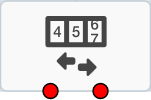
Description of the illustration ''syncstatistic.png''
Syncs the statistic cache with the server. The activity performs the following operations:
-
Invokes the StatisticsRequestAction to perform a sync.
-
Invokes the TelemetryRequestAction to perform a sync.
-
Exits branch based on response status.
The activity has no parameters.
The activity has two exits:
-
Success, when successfully sync the statistic cache with the server.
-
Error, when failed to sync the statistic cache with the server.
Telemetry
Fast Key: TELM

Description of the illustration ''telemetry.png''
Starts or stops a telemetry record.
The activity performs the following operations:
-
Gathers the Telemetry Record Id.
-
Invokes the Telemetry Action to perform the start/stop.
-
Exits branch based on response status.
The activity has two parameters:
-
Record Option: Start or Stop.
-
Telemetry Record, the value is from an external concept of the Telemetry type.
The activity has two exits:
-
Success, when successfully started or stopped the specified telemetry.
-
Error, when encountered invalid parameters including invalid record options, or failed to retrieve the telemetry record name from the specified external concept, or failed to start or stop the specified telemetry.
Translate and Store Value
Fast Key: TSST
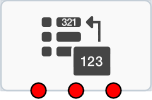
Description of the illustration ''translateandstorevalue.png''
Performs the following operations:
-
Obtain the context locations for 'Source Location', 'Destination Location' and the 'Source List Location'.
-
Read the 'Source Location' value
-
Translate if in the 'Source List Location'
-
Write the 'Destination Location' value
The activity has three parameters:
-
Source List, the value is from an external concept of the Map type.
-
Source, the value is from an external concept.
-
Destination, a context location where the translated result will be stored.
The activity has three exits:
-
Success, when translated and stored the result into the destination location successfully.
-
Not Found, when failed to retrieve values from the specified Source location or failed to find the corresponding translate value in the Source List location.
-
Error, when encountered invalid parameters, or failed to store the translated result into the destination.
Update Charging Session
Fast Key: UCS

Description of the illustration ''updatecharging.png''
Sends an update to an already established charging session with the charging data function (CDF).
The activity has four parameters:
-
Charging Type: On-line or Off-line.
-
Request Template, the value is from an external concept of the charging template type.
-
Answer Template, the value is from an external concept of the charging template type.
-
Session Name: Charging Session 1, Charging Session 2, Charging Session 3, Charging Session 4, or Charging Session 5.
The activity has five exits:
-
Success, when charging is updated successful.
-
Denied, when reservation is denied (on-line charging only).
-
No Session, when there is no charging session in progress.
-
Error, when encountering invalid parameters or unable to retrieve values from the specified external contexts, or received charging response of NO SESSIOIN, FAILURE, or PENDING FAILURE.
-
No Charge, when charging is not applicable.
Update Profile
Fast Key: UPDP

Description of the illustration ''updateprofile.png''
Updates a subscriber's profile data in the UDR.
The activity performs the following operations:
-
Invokes an Update Profile action.
-
Branches on result.
The activity has no parameters.
The activity has three exits:
-
Success Response, when received a SUCCESS response.
-
No data To Update, when received NO DATA TO UPDATE response.
-
Activity Error, when received an ERROR response.
Wait For Event
Fast Key: WFEV

Description of the illustration ''waitforevent.png''
Branches on an event result. The activity performs the following operations:
-
Validates and converts the activity parameters to internal event type and source objects.
-
Initiates a Wait For Event Action request to perform the event wait / claim.
-
Processes the Wait For Event Action response.
-
Exits according to the response result.
The activity has no parameters.
The activity has two fixed exits and more than one dynamic event exits.
-
Session Ended, when the SESSION ENDED response has been received.
-
Error, when the Wait for Event action is unsuccessful.
-
Event-based exits, which can be more than one. It will be taken when the specified event in the given session occurs successfully.
XCAP Authorize

Description of the illustration ''xcap_authorize.png''
The activity performs the following operations:
-
Verifies that ContextKey parameters are valid.
-
Gathers the XML, HTTP method and node selector from context on which to operate.
-
Authorizes the method based on source XML, HTTP method and node selector.
-
If there is an authorization failure, stores the error in the error location.
The activity has five parameters:
-
Source, an external concept.
-
AUID, an external concept, which can be a context literal value.
-
HTTP method, an external concept.
-
Node selector, an external concept.
-
Error location, an external concept.
The activity has three exists:
-
Success when operation call successful.
-
Error from XCAP operation. The XML Error Response will be set.
-
Error when failed to locate a context parameter.
XCAP Fetch And Store Document
Fast Key: XFTC
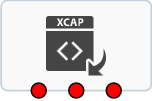
Description of the illustration ''xcap_fetch_document.png''
Loads subscriber data as XCAP XML into the context Map.
The activity performs the following operations:
-
Verifies that ContextKey parameters are valid which specify the "/UserData/Service/View/Field" xpath.
-
Gathers JSON from source (HSS presumably).
-
Invokes the pluggable XCAP AU fetch action.
-
Stores the result in either the destination or error location.
The activity has four parameters:
-
Source, an external concept.
-
AU ID of the pluggable action. Its value is either directly input or comes from another external concept.
-
Destination location, an external concept.
-
Error location, an external concept.
The activity has three exits:
-
Success when operation call successful.
-
Unable to find subscriber data to get.
-
Other Error.
XCAP Process Document
Fast Key: XPRC
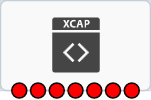
Description of the illustration ''xcap_process_document.png''
Processes the XCAP inbound configuration and the Subscriber data as XML documents.
The activity performs the following operations:
-
Verifies that ContextKey parameters are valid, which specify the "/UserData/Service/View/Field" xpath.
-
Gathers the XML from context on which to operate.
-
Processes the configuration instruction.
-
Stores the result in either the destination, or error location.
The activity has nine parameters:
-
Source, an external concept.
-
AUID, of the pluggable action; its value is either directly input or comes from another external concept.
-
HTTP method, an external concept.
-
Node selector, an external concept.
-
Namespaces, an external concept.
-
Update location, an external concept.
-
Destination location, an external concept.
-
Response location, an external concept.
-
Update keys destination, an external concept.
The activity has seven exits:
-
Success when operation call successful.
-
Success Creation, when operation call creation successful.
-
Conflict Error from XCAP operation. (XML Error Response will be filled in.)
-
Missing Element Error from XCAP operation.
-
Bad Request from XCAP operation.
-
Unauthorized from XCAP operation.
-
Error when failed to locate a context parameter.
XCAP Update Document
Fast Key: XUPD
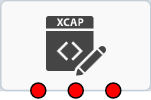
Description of the illustration ''xcap_update_document.png''
Updates subscriber data from XCAP XML into the context Map.
The activity performs the following operations:
-
Verifies that ContextKey parameters are valid (which specify the "/UserData/Service/View/Field" xpath).
-
Gathers JSON from source (HSS presumably).
-
Invokes the pluggable XCAP AU update action.
-
Stores the result in either the destination, or error location.
The activity has four parameters:
-
Source, an external concept.
-
AU ID of the pluggable action, its value either is directly input or comes from another external concept.
-
Destination location, an external concept.
-
Error location, an external concept.
The activity has three exits:
-
Success when operation call is successful.
-
Conflict Error from XCAP operation (probably Validation failure).Fills in XML Error Response.
-
Other Error.